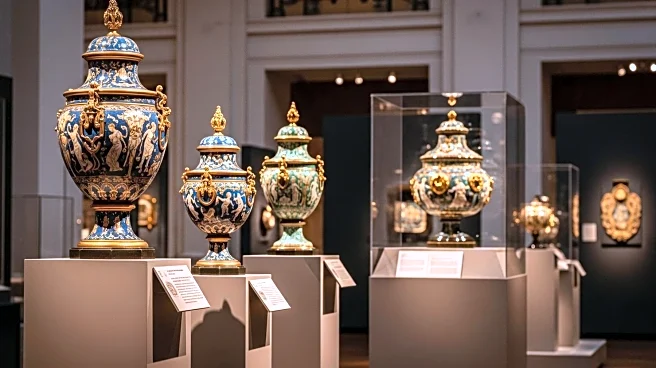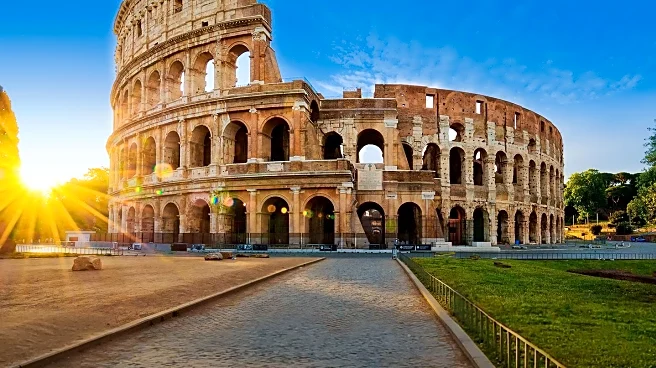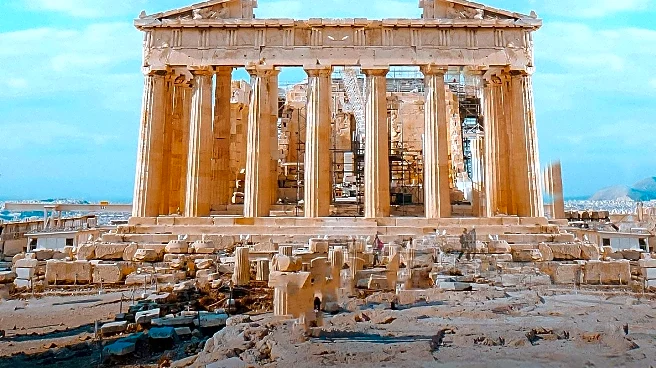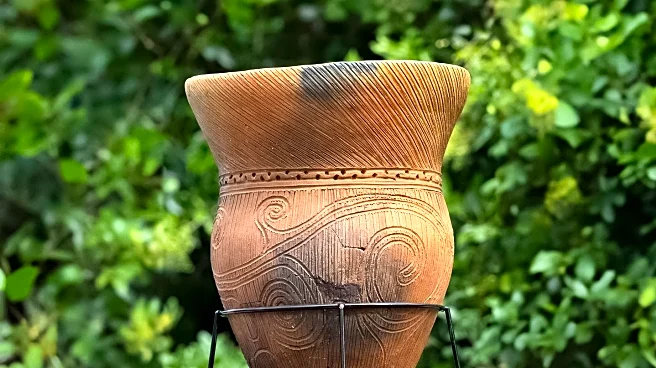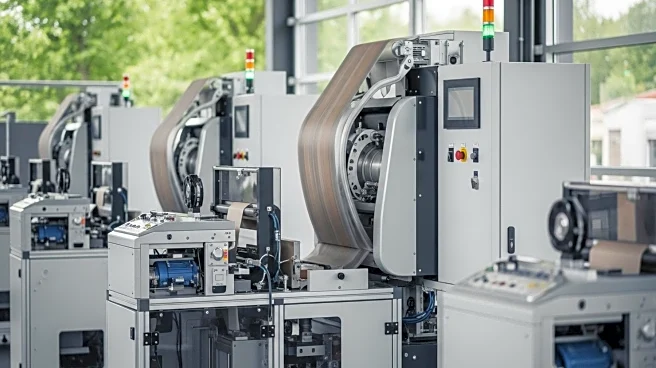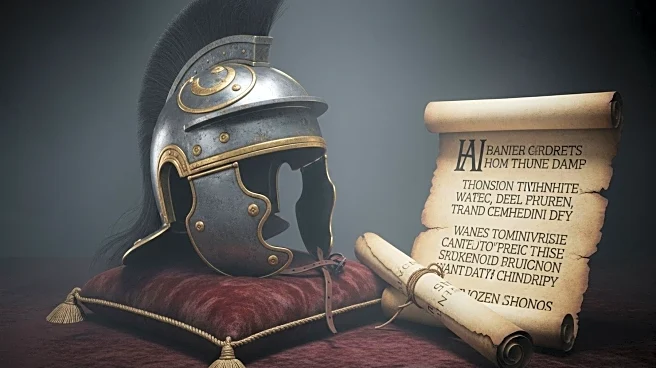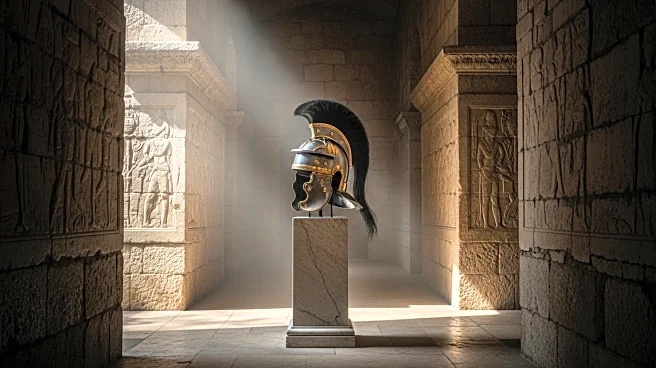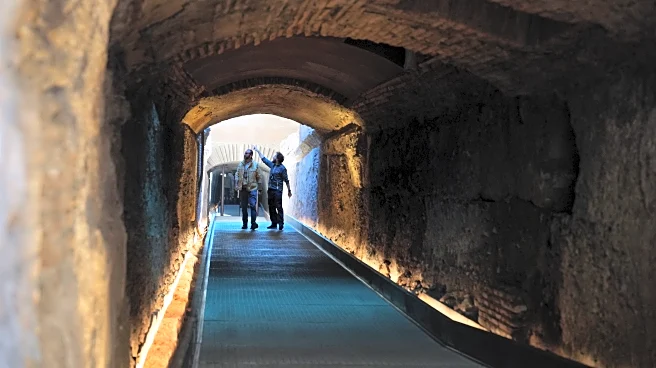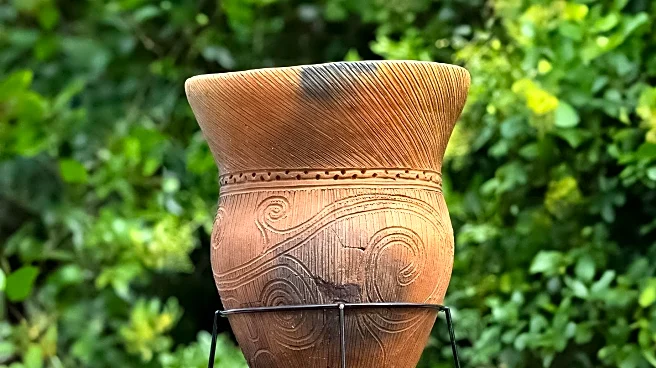What's Happening?
The Museum of Polish History has announced the discovery of artifacts from the 17th-century royal residence, Villa Regia, in the Vistula River in Warsaw. These artifacts, including marble claddings, tiles, and fragments of monumental staircases, were uncovered and are linked to the palace that was looted and destroyed during the Swedish Deluge from 1655 to 1660. The Swedish military occupied the Polish-Lithuanian Commonwealth during this period, leading to significant loss of life and destruction. The artifacts have been secured and transferred to the museum's collections for further conservation and research, with plans to reconstruct parts of the palace, such as the staircase, using these finds.
Why It's Important?
The discovery of these artifacts is significant as it provides valuable information for reconstructing the Villa Regia, a symbol of the power and wealth of the old Polish-Lithuanian Commonwealth. The reconstruction efforts will not only preserve historical architecture but also serve as a reminder of the crisis faced during the Swedish Deluge. This event highlights the importance of archaeological research in understanding and preserving cultural heritage, offering insights into historical events that shaped the region. The collaboration between archaeologists, the city of Warsaw, and heritage conservators underscores the collective effort required to protect and study historical sites.
What's Next?
The Museum of Polish History plans to use the recovered artifacts to reconstruct the palace staircase, which will help tell the story of the Polish-Lithuanian Commonwealth's historical significance and the impact of the Swedish Deluge. Further conservation and research will continue to uncover more details about the palace's architecture and history. The museum's efforts may lead to increased interest in Polish history and potentially attract more visitors and scholars to study the artifacts and the reconstructed site.
Beyond the Headlines
The discovery and reconstruction of Villa Regia could have broader implications for cultural preservation and education. It may inspire similar efforts to uncover and restore other historical sites affected by conflict and destruction. Additionally, the project could foster a deeper understanding of the cultural and historical ties between Poland and Sweden, promoting dialogue and reconciliation over past conflicts.
